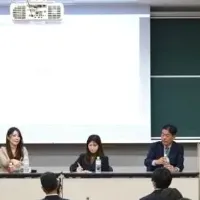
The Flourishing Language Training Sector in India: A USD 7.55 Billion Growth Opportunity
India’s Language Training Market: A Promising Future
The language training market in India has been witnessing remarkable growth, with projections estimating an expansion of USD 7.55 billion between 2024 and 2028. This growth is fueled by a significant demand for multilingual proficiency, driven by continuous professional development initiatives in an increasingly globalized workforce. According to Technavio, the market is expected to grow at a CAGR of 14.37% during this forecast period.
Factors Driving Growth
One of the primary factors contributing to the burgeoning language training sector is the rising emphasis on professional development in various industries. Employers are on the lookout for candidates who can communicate effectively in multiple languages, such as English, French, German, and Spanish, to engage a global client base. The integration of advanced technologies into language learning—such as e-learning platforms and simulations—has also played a crucial role in making language courses more accessible and engaging.
Platforms like Babbel and Rosetta Stone are at the forefront of this transition, offering personalized learning experiences that leverage content tailored to individual users. Furthermore, technologies like Virtual Reality (VR) and chatbots are enhancing the immersion and interactivity of language learning, providing learners with real-life scenarios that facilitate practical application of their skills.
Challenges Ahead
Despite these positive growth indicators, the language training market in India faces considerable challenges. One significant hurdle is the high cost associated with accessing quality training programs, particularly for individuals in economically disadvantaged backgrounds or those based in rural areas. Course fees can range from approximately USD 120 to USD 421, which may not be feasible for everyone. Moreover, insufficient technological infrastructure and unreliable internet connectivity in remote locations hinder many from participating in e-learning.
Another challenge involves the competitive landscape, where free online resources present an alternative to more structured learning programs. Moreover, the market’s diversity in languages and dialects necessitates a tailored approach to cater to various communities, which can be both a logistical and strategic complicating factor for training providers.
The Role of Institutional Learners
Institutional learners, such as students in academic settings and employees in corporations, form a considerable segment of the language training market. Renowned institutions like Jawaharlal Nehru University (JNU) and the English and Foreign Languages University (EFLU) offer specialized language courses, while several corporations like Wipro and Infosys invest in language training for their workforce.
Institutions are increasingly using digital resources and language labs to bolster their programs, aiming for a comprehensive learning experience that combines traditional instruction with innovative technological methods. This integration is crucial, as it aligns with the marketplace’s shift towards more interactive and engaging learning environments.
Conclusion
Looking ahead, the future of the language training industry in India appears bright. With rising global demands for multilingual capabilities and the proliferation of technology in education, the market is poised for substantial growth. Adaptability and innovation will be key as providers strive to meet the diverse needs of learners whilst navigating the obstacles that could hinder accessibility and quality education.
As stakeholders continue to invest in increasing language proficiency and broadening access to resources, there’s every indication that the language training market in India will make meaningful strides forward in the years to come.
Topics Other)










【About Using Articles】
You can freely use the title and article content by linking to the page where the article is posted.
※ Images cannot be used.
【About Links】
Links are free to use.